Learning the Hard Way: Manga's Themes of Growth


Intro
Manga serves as a rich narrative medium that often reflects the profound lessons of life, one of which is encapsulated in the concept of 'learning the hard way.' This theme pervades various works, illustrating how characters navigate through challenges and emerge transformed. As readers, we become witnesses to their struggles and triumphs, providing us with insights not just into their worlds, but also into our own experiences and growth.
Understanding the trajectories of these characters and how their encounters with adversity shape them is crucial in appreciating manga's educational themes. This article seeks to unravel these narratives, highlighting how manga uses the concept of struggle as a device to convey broader societal messages and cultural nuances.
Character Profiles
Overview of Main Characters
In many manga, the protagonists often embody the 'learning the hard way' ethos. Take Shōya Ishida from A Silent Voice, for instance. His journey from a bully to seeking redemption showcases how mistakes fuel personal growth. His character arc is a testament to the idea that true education comes from facing the consequences of one's actions. Similarly, in My Hero Academia, Izuku Midoriya's evolution from a quirkless boy to a revered hero embodies the struggle of perseverance against societal expectations and personal limitations.
These main characters often reflect different archetypes, each providing unique perspectives on struggle and growth, thus enriching the narrative tapestry of the series.
Supporting Characters
Supporting characters add depth and dimension to the main narratives, often presenting contrasting views on hardship. An example is Bakugo Katsuki from My Hero Academia, whose brash demeanor and competitive nature highlight different aspects of resilience and ambition. In contrast, figures like Kawai Shōko from A Silent Voice present a softer, nuanced approach to understanding pain and empathy.
These characters serve not only as catalysts for the protagonists but also as reflections of the societal norms and attitudes towards learning through hardship. Their complexities contribute significantly to the overarching themes presented in their respective stories.
Theme Exploration
Central Themes
At the heart of numerous manga presented is the notion of struggle as essential to personal development. Themes of redemption, resilience, and transformation resonate throughout various titles. Characters often confront their vulnerabilities, navigating fear of failure, isolation, or the weight of expectations. This exploration of central themes is not limited to action-packed narratives; quieter, introspective series also delve into the developmental process, charting personal and philosophical growth in real-world contexts.
Cultural References
Cultural nuances frequently emerge in these works. For instance, the concept of gaman, which translates to enduring the seemingly unbearable with patience, is evident in many Japanese narratives, creating a profound connection to the theme of learning through struggle. These cultural perspectives enrich the readers' understanding of how societal values shape individual experiences, weaving a complex narrative of educational themes embedded within the fabric of manga.
Popular Series and Recommendations
Top Anime Series of the Year
For those looking to dive deep into the theme of learning from hardship, several recent series stand out. Attack on Titan provides a visceral exploration of sacrifice and the anguish of survival. Additionally, Jujutsu Kaisen depicts characters who wrestle with their fears and traumas, ultimately finding strength within those struggles.
Hidden Gems in Manga
Not all insightful series receive the attention they deserve. Titles like Fruits Basket and March Comes in Like a Lion narrate profound emotional journeys, illustrating how struggles ripple through relationships and personal identities. Both series reflect the intricate connections between individual hardships and broader communal relationships, making them essential reads for those interested in educational themes within manga.
The journey of understanding life through manga can be as enriching as the lessons themselves.
Understanding the Concept of Learning the Hard Way
The theme of learning through hardship is pivotal in manga. This central idea resonates deeply within many narratives. It serves as a mechanism for character growth and development. Characters endure trials that push them to their limits. Through these challenges, they discover their strengths and weaknesses. They learn essential life lessons. This struggle often leads to personal transformation.
Defining the Theme
The theme of learning the hard way can be described as a journey through adversity. In this context, adversity acts as a catalyst for change. Characters face obstacles that may seem insurmountable. These challenges arise from various sources: personal battles, societal issues, or even supernatural elements.
Here are some key aspects of this theme:
- Challenges as Growth Opportunities: Adversity encourages characters to adapt and grow.
- Moral and Ethical Lessons: Characters learn important values, like perseverance and empathy.
- Relatable Experiences: Readers often find themselves resonating with these narratives.
Overall, defining this theme helps to understand how manga uses struggle as a narrative device. It informs the audience about the significance of perseverance.
Cultural Context in Manga
Manga often reflects the cultural nuances of Japan. The concept of ganbaru, meaning to persevere despite difficulties, is a significant element. This cultural backdrop enriches the narratives, lending a deeper meaning to the characters' struggles. Japanese society places a high value on resilience. This notion manifests in many stories.
Moreover, the dynamics of modern Japan contribute to the theme. A fast-paced world where individuals face pressure to succeed and conform shapes characters. In this light, their journeys resonate with readers who experience similar challenges.
Cultural context deepens the understanding of how characters respond to adversity. It reveals the societal expectations that influence their paths. This interplay between individual challenges and cultural pressures amplifies the theme of learning the hard way in manga.
Character Development Through Adversity
Character development through adversity serves as the backbone of many manga narratives. It showcases how characters evolve in response to challenges. This theme not only resonates with the audience but also deepens the emotional weight of the story. Characters are often put in situations that test their limits, shaping their personalities and beliefs. This process of overcoming obstacles is what makes their journeys relatable and impactful.
The importance of this theme lies in its ability to reflect real-life experiences. Many readers have encountered hardship or failure at some point. As such, witnessing characters navigate similar trials provides a sense of comfort and understanding. It teaches resilience and highlights the growth that can emerge from struggle.
In manga, this characterization is not merely for narrative flair. Rather, it serves a fundamental purpose: to demonstrate that personal growth often requires sacrifice and perseverance. The depth of this theme enriches the story and invites the reader to invest emotionally in the characters' journeys.
Common Character Archetypes
Protagonist with a Past
The archetype of the protagonist with a past is a compelling choice in manga narratives. Typically, this character carries emotional baggage or regrets. Their backstory often includes trauma or failure, which profoundly impacts their journey. This element of their character creates depth and provides motivation for their actions.
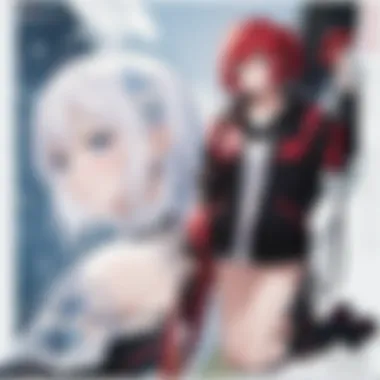
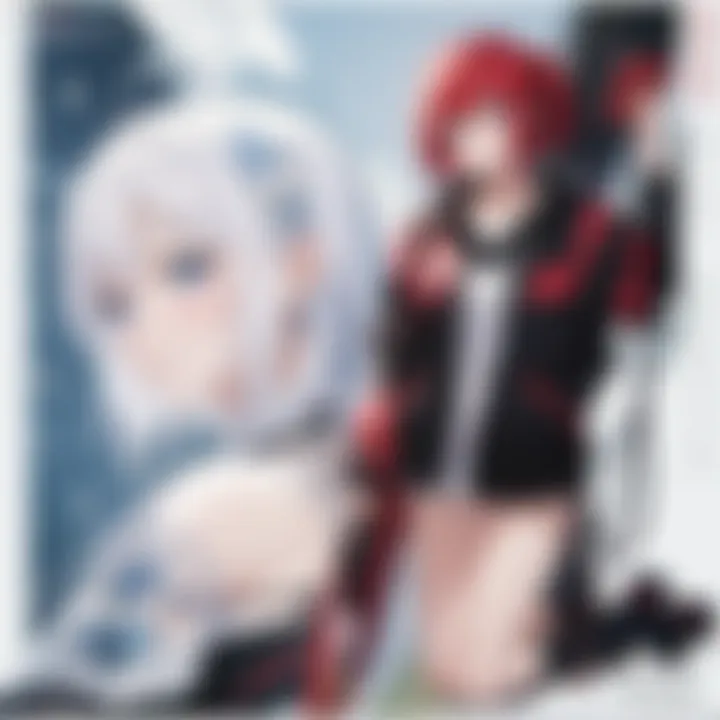
The key characteristic of this archetype is the internal conflict they face. This struggle not only drives the plot but also allows for personal growth throughout the story. Their past experiences shape their decisions, leading to a more complex character arc.
A unique feature of this archetype is how their past influences their relationships with other characters. They often seek redemption or closure, which can lead to powerful interactions. However, this can also create challenges in trusting others. Thus, it adds layers to their development.
The Reluctant Hero
The reluctant hero adds an interesting dynamic to the narrative. This character often hesitates to embrace their role in the conflict. They may feel unworthy or lack confidence, making their eventual acceptance more rewarding. This aspect contributes significantly to the overall theme of growth through adversity.
The key characteristic is their struggle with self-identity. They often doubt their capabilities and question their motives. This self-doubt makes them a relatable figure, particularly for readers who have experienced similar feelings.
A unique feature of the reluctant hero is the external influences that push them toward acceptance. Friends or mentors often play crucial roles in coaxing them into action. The balance of their reluctance and eventual determination highlights the human experience of overcoming fear.
The Mentor Figure
The mentor figure is a pivotal character in many manga. This character typically possesses wisdom and experience. They guide the protagonist through challenges, providing crucial life lessons along the way. Their involvement is vital for the character development of the main lead, showcasing the importance of support.
The key characteristic of the mentor is their role as a teacher. They often have their own flaws, making them relatable. The mentor's challenges often parallel those of the protagonist, reinforcing the theme of growth through hardship.
A unique feature of this archetype is how they set the stage for pivotal moments of transformation. Their guidance leads to moments of clarity for the protagonist. However, it can also pose a risk of becoming a crutch. When reliance on a mentor overshadows the protagonist's growth, it can diminish the impact of personal development.
Transformation Arcs
Transformation arcs are a vital component of character development through adversity. These arcs illustrate how characters evolve due to the experiences they endure. Often, transformation is not immediate. It requires time and confrontation of various challenges.
Key characteristics of transformation arcs include setbacks and breakthroughs. Characters often face repeated failures before achieving success. This gradual process reinforces the theme that overcoming hardship is essential for personal growth.
Through these arcs, readers witness the gradual shift in characters. They may start with insecurity or doubt, only to emerge more confident and self-assured. This gradual evolution mirrors real-life experiences, making the story all the more relatable.
In summary, character development through adversity is an intricate and essential element in manga. The archetypes of the protagonist with a past, the reluctant hero, and the mentor figure, along with transformation arcs, enrich the narrative. By showcasing growth through challenges, these stories resonate deeply with readers, reflecting the broader experience of struggle and resilience.
Notable Titles Exemplifying This Theme
The exploration of learning through hardship is vividly presented in various manga titles. These narratives not only entertain but also embody significant themes of growth, resilience, and the human experience. Understanding notable works in manga that exemplify this theme provides deeper insights into character development and societal reflections. Each title can offer relatable experiences to the readers, emphasizing the importance of perseverance and personal evolution.
Classics in the Genre
Naruto's Journey of Growth
Naruto Uzumaki's journey is one of the most recognized narratives in manga.
Naruto's character embodies the importance of overcoming obstacles. One major aspect of this growth is how he transforms from an outcast to a respected leader.
This journey of growth showcases the key characteristic of self-determination. Readers witness how Naruto, despite facing numerous adversities, never loses sight of his goal to be Hokage.
Naruto's Journey of Growth is beneficial for this discussion because it encapsulates the essence of personal struggle while promoting the value of friendship and hard work. Its unique feature lies in the mix of light-hearted moments intertwined with serious themes, which allows a broader range of viewers to connect with it. However, one disadvantage is its lengthy narrative, which might be daunting for new readers.
One Piece and the Pursuit of Dreams
In One Piece, the pursuit of dreams significantly impacts character development. The series illustrates how Luffy and his crew face perilous challenges while chasing their individual dreams. A specific aspect is the thematic undercurrent of freedom and adventure. The key characteristic of Luffy's irrepressible spirit serves as an inspiration, encouraging readers to follow their ambition against all odds.
One Piece is a popular choice for this article due to its unparalleled exploration of dream-chasing. The unique feature is its diverse cast of characters, each with distinct backgrounds and aspirations, enhancing relatability. One potential drawback is the vast number of chapters, which may be overwhelming for newcomers.
Contemporary Works
Attack on Titan and the Cost of Survival
Attack on Titan presents a more harrowing depiction of survival. The narrative intricately delves into the moral dilemmas faced by characters under extreme pressure. This story emphasizes survival not just as a physical challenge but as an ethical one. The key characteristic is its brutal realism, depicted through the constant peril of extinction.
This title stands out because it reflects the harsh realities of conflict and sacrifice. Its unique feature is the complex character dynamics, which enhance the depth of emotional engagement. Nevertheless, the darker themes might not appeal to all audiences, limiting its broader relatability.
Chainsaw Man’s Harsh Realities
In Chainsaw Man, the theme of harsh realities resonates strongly through Denji's life. The narrative depicts a stark world marred by despair and ambition. An essential aspect of this work is its commentary on societal expectations and personal desires. Denji's journey showcases his struggle against both external demons and internal conflicts.
This series is significant for this article as it portrays the consequences of choices and the cost of dreams. A key characteristic is its raw portrayal of life's unpredictability. Its unique feature is the blend of horror and dark humor that creates a compelling reading experience. However, the graphic nature of its content might alienate some readers.
The Role of Failure in Storytelling
Failure is a pivotal theme in manga, enhancing storytelling and developing characters. It allows authors to explore profound truths about the human condition. Failure shapes individuals, making it an essential element of narrative growth. Through the lens of struggle and defeat, manga challenges readers to reflect on their own experiences of adversity. This reflective process highlights the importance of overcoming obstacles, both in fictional worlds and real life.
Importance of Setbacks
Setbacks serve a fundamental function in the storytelling process. They introduce conflict and tension, which are vital for engaging narratives. In many manga series, characters face formidable challenges that lead them to fail. These failures are not merely plot devices; they are critical moments that drive character evolution.
When a protagonist encounters a setback, it often catalyzes self-discovery and personal growth. Characters learn about their strengths and weaknesses through adversity. Their journeys resonate with readers, as these experiences are relatable. Setbacks also create opportunities for secondary characters, such as mentors or rivals, to shine, thereby enriching the narrative.
Here are some key points about the importance of setbacks in manga:
- Character Development: Setbacks force characters to question their beliefs and strategies.
- Realism in Storytelling: They add a layer of authenticity to the narrative, reflecting real-life challenges.
- Motivation for Change: Failures often ignite a character's determination to succeed.
Lessons Learned from Defeat
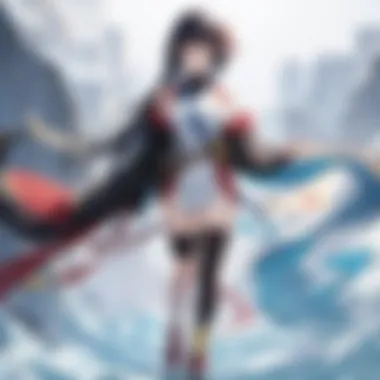
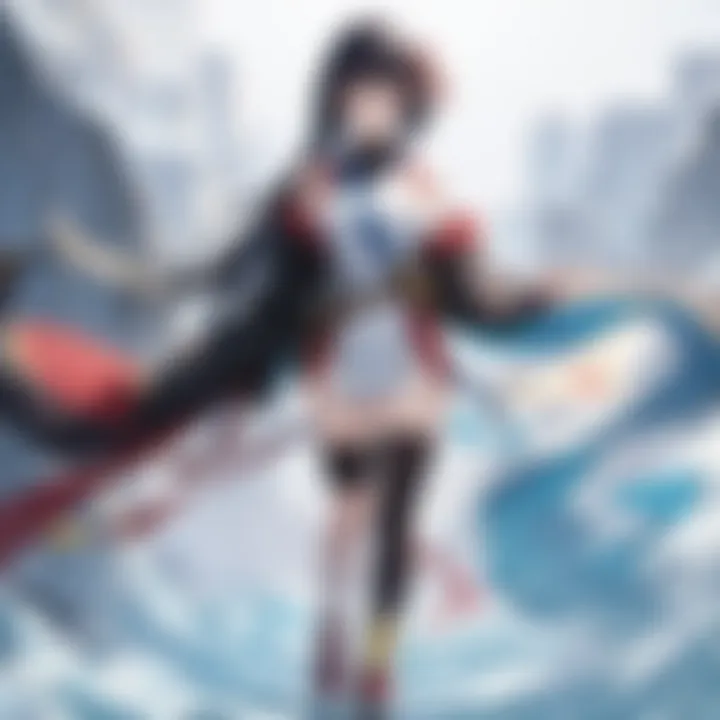
Defeat in manga often goes beyond the immediate loss. It serves as a powerful educational tool, helping characters and readers alike to understand life's complexities. Unlike mere victory, defeat imparts valuable lessons that shape future decisions and behaviors.
Characters who face defeat often analyze what went wrong. This introspection leads to significant realizations about their goals, values, and the essence of perseverance. For example, in series like Naruto, the protagonist learns that unwavering determination is as essential as technique. The nuanced portrayal of failure encourages readers to consider how defeat can be redefined as a stepping stone to greatness.
Here are some lessons derived from defeat in manga:
- Resilience: Learning to bounce back from failure is a crucial life skill.
- Understanding Vulnerability: Defeat reveals the human side of characters, making them more relatable and authentic.
- Strategic Growth: Characters develop new skills or rethink their strategies after facing failure.
- Building Empathy: Readers are encouraged to empathize with characters' struggles, fostering deeper connections.
"To fail is to learn. In every defeat lies the potential for growth."
Filial and Peer Relationships in Learning
Examining how familial and peer connections influence personal growth is critical in understanding the theme of learning in manga. These relationships often serve as catalysts for change, contributing significantly to the characters' journeys. The complexities of these bonds provide both tension and support, highlighting a spectrum of interactions that shape character development and learning experiences.
Influence of Family Dynamics
Family dynamics often dictate character motivations. In many manga series, the protagonist's family background is relayed as a fundamental aspect of their personality and choices. For instance, in Naruto, the protagonist's childhood is heavily influenced by the weight of his lineage. The absence of his parents coupled with the stigma of being the Nine-Tails' host pushes him to seek validation and acceptance. His journey is not solely about personal power but also about reconnecting with themes of belonging and forgiveness within his family context.
Factors such as parental expectations and sibling relationships can either forge paths for growth or create obstacles that characters must overcome.
- Parental roles can affect character decisions
- Sibling relationships often introduce competition
- Cultural expectations shape outcomes
Through these portrayals, manga encapsulates how family dynamics can shape a character's journey of learning the hard way.
Friendship and Rivalry
The role of friendships and rivalries can not be overlooked in manga. These relationships add depth to narratives, offering characters chances to grow through interaction with peers. Friendships often symbolize support systems that help protagonists during crises. For example, in My Hero Academia, the bonds formed between characters like Izuku Midoriya and Katsuki Bakugo show how rivalry can coexist with friendship, pushing each character to excel.
Rivalries tend to introduce conflict, which is essential for character development. The struggle between rivals can lead to significant lessons. In Attack on Titan, the rivalry between Eren Yeager and Reiner Braun is vital, demonstrating how competition can lead to self-discovery and responsibility for one’s actions.
In summary, family and peer relationships provide crucial lenses through which the theme of learning is explored in manga. They help define characters and serve as important factors that contribute to how and what lessons are learned throughout the narrative.
"In the realm of manga, the bonds formed with family and friends are often the crucible of personal growth, where pain and joy intermingle, teaching profound life lessons."
The integration of familial influence and peer dynamics enriches storytelling, providing insights into broader societal and personal struggles. These relationships enhance the reader's understanding and emotional connection with the characters, ultimately making the journey of learning more impactful.
Societal Reflections in Manga
Manga often serves as a mirror to society, reflecting the intricacies of culture, norms, and struggles that people encounter. The theme of learning through difficult experiences in manga is not merely a narrative device; it offers profound insights into societal values and challenges. Manga helps readers, especially the young, to comprehend broader societal issues while relating them to personal growth.
By analyzing how characters respond to challenges, we form a better understanding of human resilience and social dynamics. The stories within manga can build empathy, as readers witness characters navigate through various adversities. This lends itself to explorations of identity, morality, and the pursuit of dreams within the context of society.
Reflection of Japanese Culture
Japanese culture is deeply embedded in manga. Values such as perseverance, respect for elders, and the importance of communal ties often surface through character struggles. The influence of Shinto and Buddhism shape narratives that depict character growth as a spiritual journey.
For instance, series like Naruto highlight the significance of teamwork and understanding one’s heritage. The protagonist’s journey is not just about individual success but the connection he builds within his community. Through such narratives, readers can better appreciate Japanese societal norms and the emphasis placed on collective well-being over individual achievement.
Additionally, themes like honor and duty also resonate within manga. The expectation of fulfilling familial duties or upholding a family name offers a rich commentary on societal pressures that guide personal choices. Exploring these motifs encourages readers to engage with Japanese identity on multiple levels.
Global Perspectives and Themes
As manga gains global popularity, the themes of learning the hard way extend beyond the Japanese context, embracing universal struggles. Manga showcases diverse experiences, from supernatural challenges to everyday hardships, resonating with readers with different backgrounds.
Contemporary titles like Attack on Titan and Chainsaw Man tackle global themes such as survival against cruelty, the impact of war, and the psychological effects of trauma. These narratives invite readers to question societal structures and personal morality. They also highlight how adversity can shape not just individuals but entire communities.
Furthermore, manga can be a platform for addressing pressing global issues. Themes like environmental degradation, political conflict, and social inequality appear, prompting discussions around responsibility and change. These elements provide insights into societal problems that transcend cultural boundaries.
"Manga is more than just entertainment; it drives discussion on issues that affect us all."
In summary, the societal reflections in manga reveal much about personal and cultural dilemmas. They provide a lens through which readers can understand their struggles and the shared human experience. As we continue to explore these themes, manga encourages us to think critically about our surroundings and how we navigate our own lessons from hardship.
Artistic Style Enhancing the Theme
The artistic style of a manga can significantly shape the narrative and its themes, especially regarding learning and growth. An author's choices on how to depict characters and situations enhance the emotional weight of a story. Through unique artistic methods, manga is able to visually represent the hardships characters endure, thus reinforcing the message that learning often comes through struggle.
Manga artists employ several techniques to engage readers, making the challenging journeys of characters not only vivid but also relatable. This section breaks down these visual storytelling techniques and the symbolism embedded in the artwork.
Visual Storytelling Techniques
Visual storytelling techniques in manga play a crucial role in connecting readers to the theme of learning the hard way. Here are several key elements:
- Panel Layouts: The arrangement of panels can create a dynamic flow that influences the pacing of the narrative. For instance, a chaotic situation might be illustrated with fragmented panels to convey confusion.
- Character Expressions: Facial expressions and body language depict emotional states. Exaggerated expressions can highlight moments of distress or realization, effectively communicating the emotional toll of the characters’ experiences.
- Background Detail: The level of detail in backgrounds often reflects a character's mental state. A cluttered, dark background may symbolize turmoil, while a brighter, clearer background can indicate moments of hope or clarity.
- Artistic Choices: Styles like chibi for lighter moments contrast with more realistic styles during pivotal and severe lessons. This variation maintains engagement while emphasizing the seriousness of certain lessons.
These storytelling techniques accentuate the theme of hard-earned knowledge by making the narrative accessible and impactful.
Symbolism in Artwork
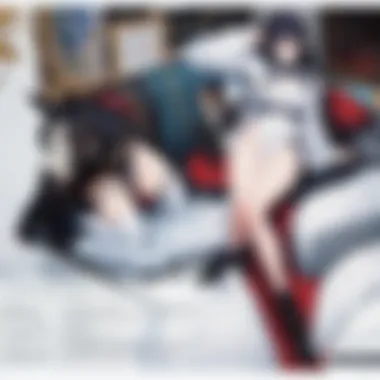
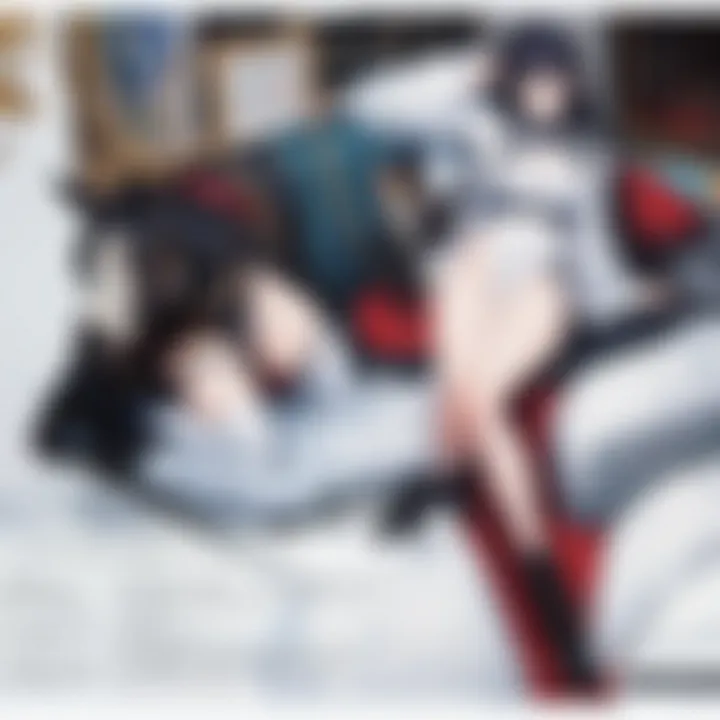
Symbolism in manga serves not just as a decorative element but as a vital component that enriches the storytelling experience. Various symbols embedded within artwork can deepen the reader's understanding of thematic elements. Examples include:
- Nature Elements: Natural disasters, like storms, often symbolize internal struggles. The aftermath signifies growth and resolution.
- Objects or Artifacts: An object, such as a broken sword or a meaningful token, may represent lost opportunities or hard-won lessons. Its significance can follow characters throughout their journeys.
- Color Schemes: Different colors evoke specific emotions. Darker hues may reflect despair, while bright colors often correlate with hope and renewal.
- Repeated Imagery: Certain images recur throughout a work to underline character development. A chain breaking can symbolize freedom from past mistakes and learning from them.
This layer of symbolism facilitates profound connections between the artwork and the characters’ journeys.
"Art and narrative in manga combine to create a multidimensional learning experience, where visual elements echo the themes of struggle and resilience."
Reader Reception and Impact
Understanding reader reception of manga, particularly those exploring themes of learning the hard way, is pivotal. The emotional core of stories resonates significantly with audiences. This theme often evokes a powerful response as readers reflect on their life experiences, recognizing parallels between the hardships of characters and their own challenges. It fosters a sense of connection, making readers more invested in the narrative arc of characters who face and ultimately overcome adversity.
Manga that emphasize hard lessons invite readers to engage with profound questions about struggle, resilience, and growth. This creates an environment where readers can explore complex emotions in a safe space. When readers see characters deal with setbacks and evolve, they gain insights into their own journeys. The familiarity with these themes can bolster resilience and encourage self-reflection.
Engagement and Relatability
The engagement factor in manga largely hinges on relatability. Characters who navigate tough situations serve as mirrors for readers. This relatability offers comfort, enabling readers to feel that they are not alone in their battles. For instance, series like "Naruto" depict growth from failure, illustrating that perseverance can lead to success. Readers often see themselves in the struggles portrayed, fostering emotional engagement.
Manga effectively utilizes recognizable life challenges. Issues such as loneliness, grief, and the pursuit of dreams resonate with a wide audience. Characters are crafted with vulnerabilities that resonate deeply on a personal level. The act of overcoming these obstacles captivates the reader's interest, leading to sustained engagement throughout the narrative.
- Key aspects influencing engagement:
- Relatable characters
- Real-life struggles
- Narrative arc of growth
Influence on Adolescent Development
Adolescence is a formative period marked by identity exploration and emotional turbulence. Manga's theme of learning the hard way can significantly influence this developmental stage. During this time, individuals face numerous challenges—academic pressures, social dynamics, and self-discovery. The representation of characters overcoming adversities helps adolescents navigate their paths with a sense of hope and resilience.
Manga like "Attack on Titan" illustrates severe challenges that push characters to their limits. Such narratives can show young readers that facing hard truths leads to personal growth. By engaging with these stories, adolescents may find practical lessons that guide their own decisions and coping mechanisms.
The impact of these narratives is profound:
- Building resilience: Characters demonstrate that setbacks are part of life, teaching young readers to manage failure.
- Encouraging empathy: Readers learn to understand diverse perspectives by engaging with characters’ struggles.
- Fostering critical thinking: Analyzing characters’ choices encourages readers to reflect on their decisions and values.
"Stories of hardship not only entertain us but also impart essential life skills, especially to those navigating their formative years."
Critique of Learning Hard Lessons
The theme of learning through hardship is prominent in many manga series, inviting both admiration and critique. The critique surrounding this theme sheds light on the broader implications of portraying severe suffering and the lessons derived from it. This section discusses the balance of honest representation of struggles with the need to avoid glorifying suffering. Such analysis is crucial, as it allows readers to reflect on not only the characters’ journeys but also the ethical dimensions of storytelling in manga.
Overemphasis on Suffering
In numerous narratives, manga protagonists face immense adversity that often becomes central to their character arcs. While this suffering can serve as a catalyst for development, there is a risk of overemphasizing pain. This focus on hardship can lead to a portrayal that prioritizes misery over growth. Some series, like Attack on Titan or Tokyo Ghoul, tend to explore this dark facet heavily. These stories may impress upon readers the notion that suffering is a prerequisite to true strength or understanding.
However, this perspective can become problematic. It may imply that without substantial hardships, one cannot learn or evolve. Such a stance oversimplifies the complexities of growth and can alienate those who do not identify with extreme suffering. Moreover, it can foster a bleak outlook on life, suggesting that value comes solely through adversity.
To understand this better, a few key considerations arise:
- Narrative Balance: Does the story provide instances of joy or relief, or is every arc steeped in sorrow? A balanced portrayal may present a more realistic approach to growth.
- Character Agency: Are characters portrayed as active agents in their learning process, or are they merely victims of circumstance? Empowerment can be as valuable as suffering.
- Potential Damage: What are the psychological implications for readers who may relate to these narratives? The emphasis on hardship can reinforce negative self-perceptions in real life.
Potential Misinterpretations
While the theme itself can carry profound lessons, it can also lead to misinterpretations among the audience. Readers may take the message that excessive hardship is inherently noble or even required for redemption. The idea that one must suffer to realize potential can perpetuate harmful ideologies. This misinterpretation can be detrimental, particularly for younger audiences who may lack the experience to differentiate fiction from reality.
Additionally, some may view certain characters as ideal role models solely based on their capacity to endure and grow from pain, without recognizing their deeper flaws. For instance, in Naruto, the title character’s journey is often framed through his traumatic experiences. Readers may idolize him for surviving hardship, overlooking the more nuanced aspects of his personality.
It is essential to address how these representations influence societal norms and personal expectations. A few considerations include:
- Role Models: What kind of traits do readers admire and emulate? Are they valuing resilience at all costs, or can success be acknowledged with less suffering?
- Cultural Reflection: How does these narratives reflect or distort cultural attitudes towards hardship? Different societies view struggle differently, which can alter the narrative's reception.
- Sociological Impact: How do these representations align with mental health discussions? It is vital to approach suffering with care, ensuring it does not encourage negative coping mechanisms.
The narrative of suffering is multifaceted and requires keen understanding. It can build depth but can also mislead if not approached thoughtfully.
Future Directions in Manga Storytelling
Understanding the future directions in manga storytelling is essential for grasping how the medium may evolve and reflect contemporary themes. As manga continues to grow in popularity, there is a notable shift in how stories are told and the themes that emerge. Focusing on the potential progression of narratives, styles, and the expanding influence of technology lays the groundwork for a deeper comprehension of manga’s adaptive nature. This exploration is not just about evolving art forms but also about the shifting cultural landscape that manga often mirrors.
Emerging Trends
The manga industry is experiencing new trends that shape its storytelling framework. One key trend is the increasing diversification of genres. Traditionally dominated by shonen and shojo, there is now a rise in genres such as isekai, slice-of-life, and even horror, reflecting broader societal interests and issues. This diversification allows for more varied character arcs that incorporate real struggles, making the stories feel more relatable and urgent.
Another significant trend is the blurring of lines between manga and other media, such as light novels and anime adaptations. Readers consume multiple formats simultaneously, prompting creators to innovate in their storytelling techniques. Many series also now include digital formats, which widen access and shift narrative pacing, allowing for quicker releases and responsive storytelling based on reader feedback.
Furthermore, the themes of mental health and identity are receiving increased focus. Characters often confront personal demons against a backdrop of fantastical elements, a reflection of real societal challenges. This narrative shift is not only engaging but also critical, providing readers with a nuanced understanding of modern struggles.
Impact of Technology on Storytelling
The role of technology in shaping manga cannot be overstated. Digital platforms are transforming how creators distribute their work. Webtoons and online publication have gained traction, allowing lesser-known authors to reach audiences without the barriers posed by traditional publishing. This change is particularly significant for indie creators, expanding the narrative voices in the manga landscape.
Additionally, technology is influencing visual storytelling. Tools for creating manga have become more accessible, leading to a surge in experimental art styles. Infinite scrolling and interactive formats are now possible, also evolving the reader's experience. These innovations often facilitate unique storytelling methods where readers can choose their path, further engaging them in the narrative.
On a broader scale, the global reach of manga has transformed its storytelling traditions. With more translations available, a diverse array of influences is now shaping narratives. Western styles and storytelling techniques are merging with traditional Japanese culture, resulting in hybrid stories that reflect a global perspective.
"Manga reflects both the intricacies of individual journeys and the universal truths of human struggle. It thrives on its ability to adapt and resonate with changes in society."
As this exploration evolves, understanding these shifts will enhance the appreciation of manga as an art form that transcends mere entertainment.







